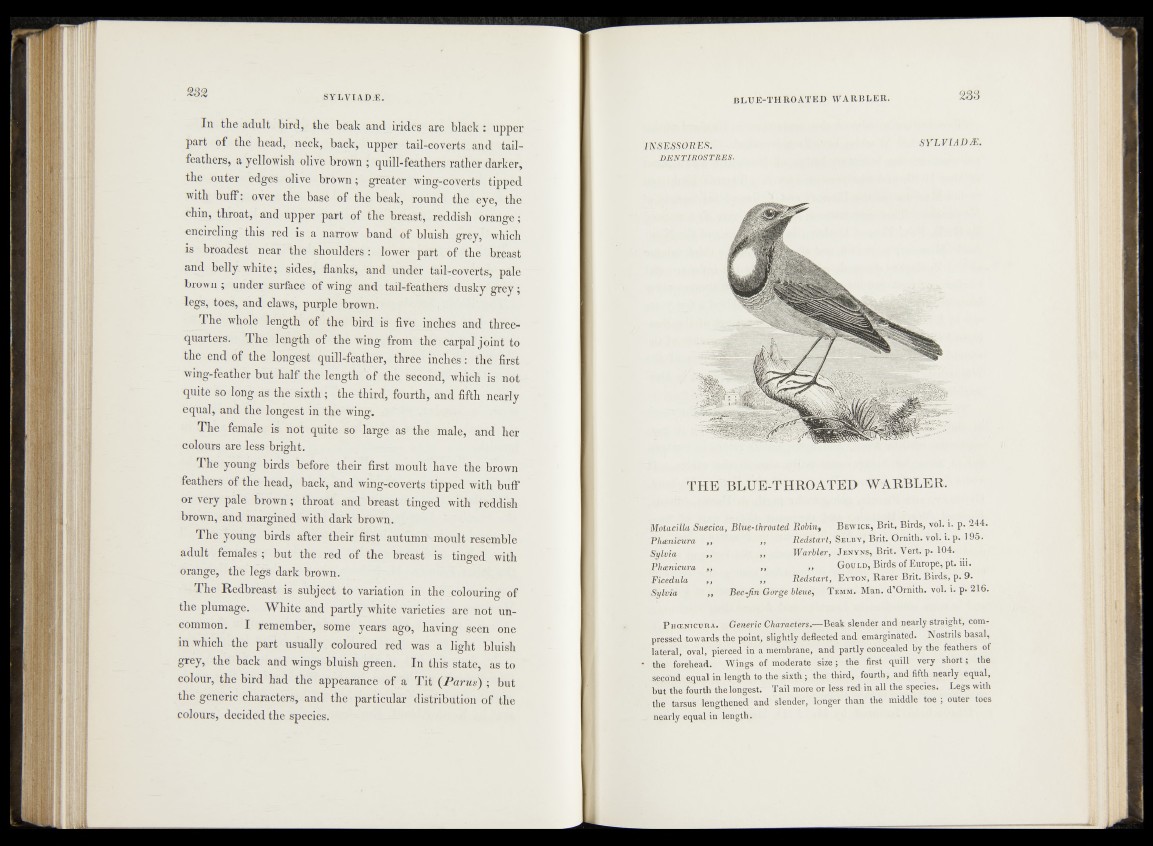
In the adult bird, the beak and irides are black : upper
part of the head, neck, back, upper tail-coverts and tail-
feathers, a yellowish olive brown ; quill-feathers rather darker,
the outer edges olive brown; greater wing-coverts tipped
with buff: over the base of the beak, round the eye, the
chin, throat, and upper part of the breast, reddish orange;
encircling this red is a narrow band of bluish grey, which
is broadest near the shoulders : lower part of the breast
and belly white; sides, flanks, and under tail-coverts, pale
brown ; under surface of wing and tail-feathers dusky grey;
legs, toes, and claws, purple brown.
The whole length of the bird is five inches and three-
quarters. The length of the wing from the carpal joint to
the end of the longest quill-feather, three inches: the first
wing-feather but half the length of the second, which is not
quite so long as the sixth ; the third, fourth, and fifth nearly
equal, and the longest in the wing.
The female is not quite so large as the male, and her
colours are less bri©ght.
The young birds before their first moult have the brown
feathers of the head, back, and wing-coverts tipped with buff
or very pale brown; throat and breast tinged with reddish
brown, and margined with dark brown.
The young birds after their first autumn moult resemble
adult females ; but the red of the breast is tinged with
orange, the legs dark brown.
The Redbreast is subject to variation in the colouring of
the plumage. White and partly white varieties are not uncommon.
I remember, some years ago, having seen one
in which the part usually coloured red was a light bluish
grey, the back and wings bluish green. In this state, as to
colour, the bird had the appearance of a Tit (Parus) ; but
the generic characters, and the particular distribution of the
colours, decided the species.
JNSESSOEES.
DENTIROSTRES.
SYLVIADÆ .
TH E BLUE-THROATED W ARBLER.
Motacilla Suecica, Blue-throated. Robin, B ewick, Brit. Birds, vol. i. p. 244.
Phoenicura „ ,, Redstart, Selby, Brit. Ornitli. vol. i. p. 195.
Sylvia ,, ,, Warbler, J enyns, Brit. Vert. p. 104.
Phoenicura „ „ „ G ould, Birds of Europe, pt. in .
Ficedula ,, ,, Redstart, E yton, Rarer Brit. Birds, p. 9.
Sul,via .. Bec-ûn Gorge bleue, T emm. Man. d’Ornith. vol. i. p* 216.
P hienicuba. Generic Characters.—Beak slender and nearly straight, compressed
towards the point, slightly deflected and emarginated. Nostrils basal,
lateral, oval, pierced in a membrane, and partly concealed by the feathers of
the forehead. Wings of moderate size; the first quill very short; the
second equal in length to the sixth; the third, fourth, and fifth nearly equal,
but the fourth the longest. Tail more or less red in all the species. Legs with
the tarsus lengthened and slender, longer than the middle toe ; outer toes
nearly equal in length.